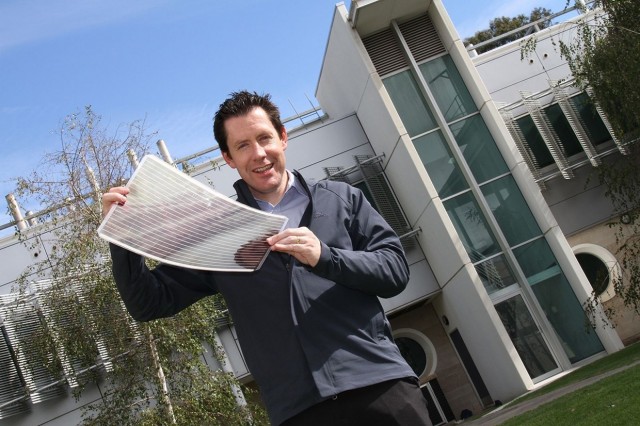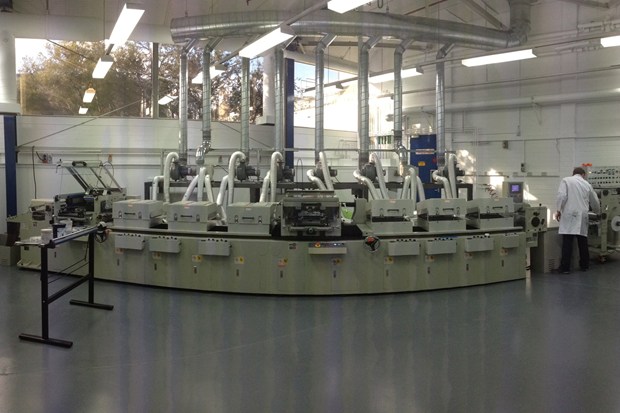Printable A3-sized solar cells hit a new milestone in green energy
Printing 10 meters of solar cells in a minute means good things for solar.

Victorian Organic Solar Cell Consortium
Imagine a future where solar panels speed off the presses, like newspaper. Australian scientists have brought us one step closer to that reality.
Researchers from theVictorian Organic Solar Cell Consortium (VICOSC) have developed a printer that can print 10 meters of flexible solar cells a minute. Unlike traditional silicon solar cells, printed solar cells are made using organic semi-conducting polymers, which can be dissolved in a solvent and used like an ink, allowing solar cells to be printed.
Not only can the VICOSC machine print flexible A3 solar cells, the machine can print directly on to steel, opening up the possibility for solar cells to be embedded directly into building materials.
"Eventually we see these being laminated to windows that line skyscrapers," said David Jones, a researcher at University of Melbourne who is involved with the work. "By printing directly to materials like steel, we'll also be able to embed cells onto roofing materials."

The solar cell printer
Victorian Organic Solar Cell Consortium
The news comes just a month before Harvard's Clean Energy Project plans to make public in June a giant database of compounds that can be used for printing solar cells. The list of 20,000 organic compounds may help scientists develop computer models for more efficient and less expensive printable solar cells.
Solar energy received another boost on the opposite side of the world as Elon Musk's rooftop solar energy company, SolarCity, received backing from Goldman Sachs. The $500 million deal will provide leases for SolarCity customers, 90 percent of whom lease the solar panels rather than buy them outright.
In 2010, a team at MIT unveiled a paper solar cell that could be folded into a paper aeroplane and still function.
Efficiency is still an issue for printable solar cells. The VICOSC team say that their cells can generate up to 50 watts of power per square meter, meaning you would need two meters squared to safely power a 15-inch MacBook Pro.
Before you gets carried away with notions of printing your own solar cells at home, it should be noted that VICOSC's printer currently costs A$200,000 ($199,400).


No comments:
Post a Comment
please give feedback about my post and ask your doubts regarding about the post.Thanks